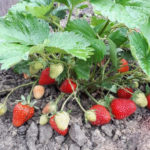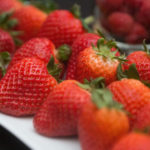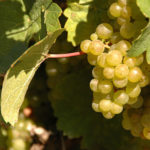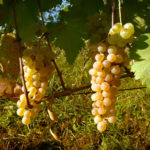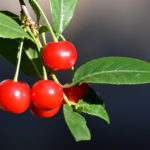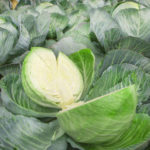Cherry variety Nord Star
As a rule, foreign varieties of fruit trees are not frequent guests in Russian gardens. But you need to get to know them, if only because they show themselves quite well in our climate. Take, for example, the American variety Nord Star, or the North Star. This cherry was created in 1950 at the Minnesota Agricultural Experiment Station. Author unknown. But the parental line can be traced. Our heroine appeared as a result of crossing an old Western European variety Lotovaya (Lotovka, Morel Lotovaya, Angliyskaya Morel, Shadow Mo-real, Senchesta Morelle, Schattenmorelle) and a seedling that grew from a seed of an unknown cherry variety obtained in 1918 from Serbia. According to VNIISPK, our heroine was declared for a state test in 1985. But at present it is not included in the State Register of Breeding Achievements of Russia. Nevertheless, the variety is quite famous in Belarus and Ukraine. In 1995, the variety was included in the State Register of Plants of Ukraine. In Russia, the southern regions and central regions of Russia are considered the most suitable for cultivating the North Star.
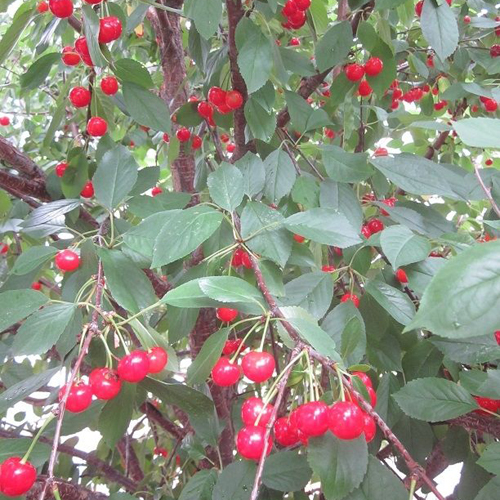
Description
The dimensions of the American are small. At a young age, cherry growth is active, after entering the fruiting period - moderate. The tree reaches a height of only 2.0 - 2.5 meters, it is decorated with a not very dense and compact rounded crown. The stem and branches are covered with dark brown bark. The leaf blade is small, narrowly oval, 75 × 40 mm in size, with a large serrate edge. The leaf is leathery, with a glossy surface. Inflorescence Nord star consists of 3 - 4 small flowers. Their diameter is only 25 mm, the shape is saucer-shaped. The corolla is formed by touching, weakly corrugated petals of a wide oval shape. The stigma of the pistil can be located above the anthers, or below. The calyx of the flower is goblet, a strong tan appears on the sunny side. The pedicel is short - 20 mm, with bracts. The type of fruiting is mixed, the branches of the first, second and third years are the most productive.
Cherry berries are of medium size, weighing 4.0 grams, but not more than 4.5 grams, measuring 17.5 × 19.7 × 17.3 mm. The shape is from rounded to broadly round, the apex is round, the funnel is narrow, the abdominal suture is slightly flat, not pronounced. The skin is thin, glossy, dark red. The pulp is red, with a delicate fibrous consistency, very juicy. The juice is red. The taste of the variety is satisfactory, the taste is sweet and sour, but for many it is still rather sour. Assessment of tasters from 3.8 to 4 points. 100 grams of raw matter contains: 13% dry matter, 9.2% sugars, 1.5% free acids, 16.0 mg of ascorbic acid. The stone is medium, round, weighing 0.2 grams, measuring 7.0 × 6.0 × 6.0 mm. It makes up 5% of the total mass of the drupe. It is easily separated from the pulp. Peduncle 41 - 44 mm, with 1 or 2 non-falling bracts. The separation from the berry is dry.
Characteristics
- Nord is old, grafted on antipka, shows very good early maturity. The variety begins to bear fruit already 2 to 3 years after planting with an annual seedling;
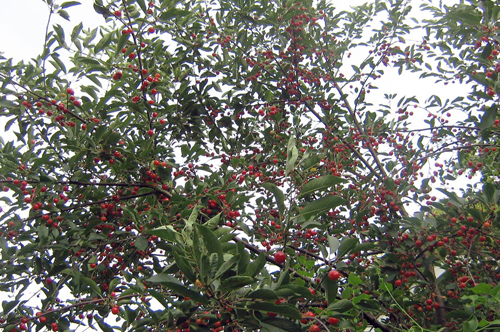
- cherry blossoms at a later date, so it is not afraid of return frosts. True, in the southern regions, flowering occurs somewhat earlier;
- in terms of ripening, the variety is late. Depending on the climate of the region, fruits begin to ripen from mid-July to early August;
- productivity is good. The Institute of Horticulture of the National Academy of Agrarian Sciences of Ukraine provides data on 15.0 - 20.0 kg per tree;
- frost resistance is quite high. VNIISPK notes the ability of the culture to withstand low temperatures. So, when freezing to -32 ° C, the number of intact flower buds was 57%, with a decrease in temperature to -40 ° C - 30%;
- immunity is high. The variety shows field resistance to clasterosporia and coccomycosis, the lesions were no more than 1.0 points. But at the same time, there is a decrease in resistance to moniliosis in old trees.Infection occurs mainly during the flowering period, which coincides with heavy rainfall. In the process of the development of the disease, the death of individual branches and the weakening of the tree as a whole are noted;
- there is good drought resistance, the ability to withstand high air temperatures and rather long dry periods;
- according to the method of use, the variety is universal. Cherries can be consumed in their natural form, however, not everyone may like the taste. Most housewives use the crop for processing.
Pollinators
Nord Star is considered to be a partially self-fertile variety. Therefore, the best productivity and high quality berries are possible only in collective plantings. For our heroine, the best neighbors will be Meteor, Oblachinskaya, Nefris. True, some gardeners call the variety absolutely self-fertile, capable of forming an almost full-fledged crop, even if there are prolonged rains during the flowering period.
Agrotechnics
Cherries can be planted in spring and autumn, depending on the climatic characteristics of the region. Small dimensions allow planting plants at a distance of 2 meters from each other, with a row spacing of 3 meters. The tree needs a lot of sunlight, the soil in the trunk circle should be moderately moist. It is worth abandoning planting in lowlands and in areas with a close occurrence of subsoil waters to the surface. Despite the resistance to major diseases, preventive spraying should be carried out on time. It is also important to carry out sanitary and anti-aging pruning in a timely manner.
American Nord Star is valued for its yield, frost resistance and unpretentiousness. The short plant is very easy to care for and harvest. The compact size allows the crop to be used in intensive garden plantings, in addition, the variety is suitable for mechanical harvesting. However, if we evaluate cherries by their taste, then they are more suitable for processing than for fresh consumption.
